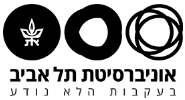Interconnected Living Labs Dashboard
לעברית לחצו כאן
Interconnected Living Labs Dashboard
Dr. Tal Soffer, Cintia Tetelbom Schuchmann, Anat Soroka Zuta
The Fourth Industrial Revolution, what does it mean?
- Digital transformation and integration of technologies
- Blurred lines between physical, digital and biological
- Shift in the industry
- Evolving in an exponential pace
Impact of Industry 4.0
Benefits:
- Increased Efficiency: more efficient and streamlined production + Automation and robotics
- Customization and Flexibility: customization of products and more flexibility in manufacturing, reducing waste and meeting customer demands
- Data-Driven Decision-Making: The use of data for optimization and predictive maintenance
- Supply Chain Transformation: improving tracking, inventory management, and demand forecasting. Impacts global economy by altering production locations and competitiveness among countries and regions.
- Environmental Sustainability: reducing waste and optimizing resource allocation.
it also presents potential challenges:
- Job Displacement - Automation and robotics
- Skills Gap – as the technology advances
- Security Concerns (Privacy and Ethics Issues) - the increasing dependence on automation, artificial intelligence, and digital interfaces
- Economic Inequalities
- Loss of Traditional Industries
New Pedagogical Models & Approach
Living Labs – Key concepts
- User-centered methodologies
- Experiments in a real-life setting
- Bridge between research and industry
- Outside-the-box thinking
- Co- Creation
- Real-World and Authentic Scenarios
- Collaboration
- Interdisciplinary Partnership
- Iterative Process
- OPEN SCIENCE – SHARED KNOWLEDGE
Areas of implementation
Since then, there are many kinds of Virtual Labs all over, covering different subjects and areas of research.
- Manufacturing and Industry 4.0: aim to modernize manufacturing processes by implementing technologies like automation, the Internet of Things (IoT), and data analytics.
- Smart Cities and Urban Development: focus on creating sustainable, efficient, and technology-driven urban environments. They address issues like transportation, energy management, waste reduction, and urban planning.
- Healthcare and Well-being: aim to develop and test innovative medical technologies, telemedicine solutions, and healthcare services. They often involve hospitals, clinics, and healthcare professionals.
- Mobility and Transportation: These living labs explore the future of transportation, including autonomous vehicles, electric mobility, public transportation enhancements, and smart traffic management systems.
- Energy and Sustainability: work on renewable energy sources, energy-efficient buildings, and environmentally friendly practices. collaborate with energy providers and utilities.
- Agriculture and Food Production: focus on sustainable farming practices, precision agriculture, and technology-driven solutions for improving crop yields and food production.
- Entertainment and Media: explore new technologies and content delivery methods for gaming, streaming, and interactive media, enhancing the user experience.
- Security and Public Safety: focus on enhancing security measures, emergency response systems, and public safety through the development and testing of advanced technologies
- Education and Learning Environments: aim to create innovative learning environments, digital education tools, and pedagogical approaches. They may partner with schools, colleges, and universities.
Real Life Learning - Living Labs in Education
Living Labs in education provide a dynamic and immersive environment where students and educators can engage in real-life learning.
Sharing knowledge in a sea of data
The challenge: How to create a platform that effectively facilitates the sharing, presentation, and organization of knowledge
The Solution: Living Labs Dashboard
From Learning Activity to Multitool. The Database activity allows the lecturers and students to build, display and search a bank of entries about any topic. The format and structure of these entries can be adjusted to include images, files, URLs, numbers, text and more.

